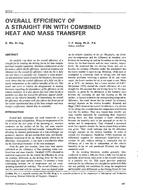Since the passage of the Occupational Safety and Health Act in 1970, the United States government, employers, and employees have increased their efforts to reduce hazards in the workplace. Numerous standards concerning work conditions and practices have been developed by government agencies (particularly the Occupational Safety and Health Administration) and industry groups. Although few of these standards specify the types of protective clothing that should be worn for different job assignments, some firms require workers to wear special clothing and frequently provide them with it. Some firms even take responsibility for the care, repair, and replacement of the items. However, many employees who are given protective garments wear them incorrectly or refuse to wear them at all because the items make the wearers feel hot.
Although protective clothing reduces the probability that a person will be injured due to hazards in the workplace, it should not simultaneously increase the probability that a worker will suffer thermal discomfort and heat-related physiological, problems. Garments that entrap body heat can cause problems for people who work in hot industrial environments and/or who work at an active pace (i.e., generate more body heat). In extreme cases, a worker may develop the symptoms of heat exhaustion or suffer a heat stroke.
Citation: Symposium, ASHRAE Transactions, Volume 88, Part 1, Houston, TX
Product Details
- Published:
- 1982
- Number of Pages:
- 18
- File Size:
- 1 file , 1000 KB
- Product Code(s):
- D-HO-82-09-5


